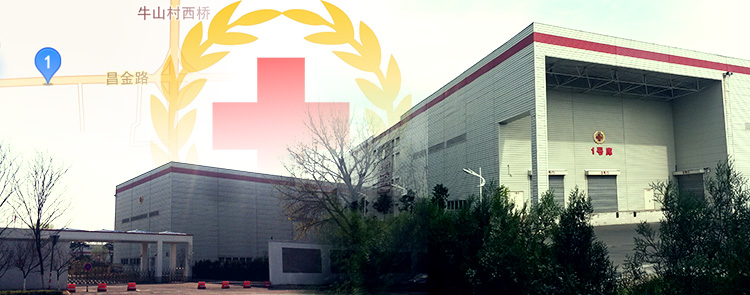The following censorship instructions, issued to the media by government authorities, have been leaked and distributed online. The name of the issuing body has been omitted to protect the source.
All websites must immediately delete the Tencent Finance article “Red Cross’s ‘Secret Warehouse.'” Do not hype discussions related to the Red Cross. (August 19, 2014)
各网站立即删除腾讯财经《红十字总会的“秘密仓库”》一文,不得炒作红会有关话题。
Feng Jun’s investigative report for Tencent reveals that the Red Cross was given storage space for emergency supplies in a Beijing suburb, which it then rented out to logistics companies, including the German company DHL, through an intermediary [Chinese]:
Viewed from the outside, the storage facility is surrounded by an approximately four meter [13 foot] wall, inside of which is a line of 10-meter [33 foot] poplars, totally concealing the sign for the “Red Cross Society of China Emergency Supply Collection Center” and the symbol of the Red Cross. All that can be seen of the four warehouses are their white roofs. Public security officers at the entrance train their eyes on the intermittent cars and people entering and leaving the facility.
This enormous, somewhat “mysterious” facility was built four years ago. After the 2008 Wenchuan earthquake, the country suddenly took seriously disaster relief preparations. In October 2010, the Ministry of Finance allocated 117 million RMB [19 million USD] for the construction of the first national disaster relief supply storage facility, administered as the Red Cross Society of China’s Emergency Supply Collection Center (Emergency Center).
[…] “Everyone knows it isn’t the emergency supply warehouse that it appears to be. They just took up this space, built some warehouses, then rented them out. It’s actually a logistics center,” a 60-year-old villager told Tencent Finance. He worked at the cement factory in Niulanshan Township until the factory closed in 2003. The factory land was requisitioned for the Emergency Center.
“I heard they rent the warehouses to an intermediary, which then sublets to several logistics companies. I think the country wasted its money.” In interviews with over ten residents and businesses, no one mentioned seeing “disaster relief supplies being transported into [the facility].”
On the afternoon of April 1, Tencent Finance saw several people wearing “Beijing Tongyi Logistics” uniforms waiting outside the west gate. They said they worked for this company and had “come to pick up goods.” The workers revealed that they were collecting computers, printers, and other electronics, and that they had not seen quilts, tents, or other emergency supplies inside the facility.
顺眼望去,仓库基地四周都筑有约4米高的围墙,围墙里又种着一排10多米高的白杨树,“中国红十字会总会备灾救灾中心”几个大字和红十字会的标志被遮的严严实实,四个仓库也只露出白色的屋顶。门口的保安,警惕地注视着断续进出的车子和人流。
这个有些“神秘”的超大型仓库已经建成四年。2008年汶川地震后,国家空前重视备灾救灾体系的建设。2010年10月,中央财政拨款1.17亿元,建成了首个国家级备灾救灾物资仓库,隶属于中国红十字会总会备灾救灾中心(简称备灾中心)。
[…]“大家都知道,它并不是想象中的备灾救灾仓库,是‘挂羊头卖狗肉’,就是占着这个地方,盖个仓库,再出租,实际上就是一个物流中心。”一位60多岁的村民告诉腾讯财经。他是原牛栏山镇水泥厂的员工,该厂2003年关闭后,土地就被征用于修建备灾仓库。
“听说把仓库出租给一个中介公司了,这个公司再转租给好多物流公司。我感觉国家的钱白投了。”腾讯财经询问的十多位村民以及商户也都从没见过“救灾物资运过来”。
4月1日下午,腾讯财经看到数位穿着印有“北京桐议物流有限公司”工作服的工人在仓库的西门外等候。他们表示自己是该物流公司的员工,“是来这里提货的”。工人们透露,他们提的货多为电脑、打印机等电器产品,在仓库里没有看到过棉被、帐篷之类的救灾物资。[Chinese Source]
The Red Cross has suffered public distrust since playgirl Guo Meimei claimed to be the organization’s “commercial general manager” in 2011. While Guo later admitted her lie, she has resurfaced after other natural disasters. Meanwhile, the Red Cross has struggled to rebuild its reputation.
When a 6.1 magnitude earthquake shook Yunnan on August 4, Guo Meimei confessed to gambling on national television, adding an apology for smearing the Red Cross. The confession backfired, as netizens fumed that Guo’s confession had shunted real news aside.









